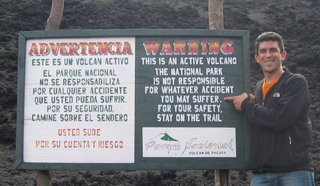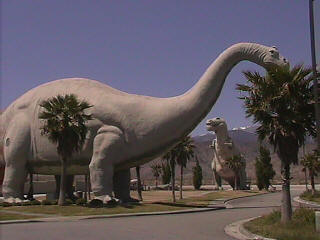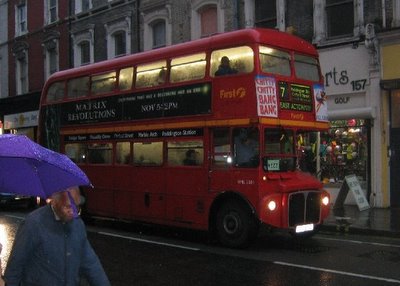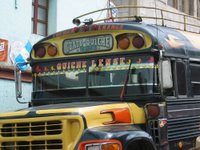The accommodations I chose at the St. James hotel in Antigua, Guatemala were spartan, to say the least. For $10USD, I got a bed, a light and a night stand. It was adequate for the first few days, but after a while, I started to feel a little disconnected from the world. I am a news junkie and I hadn’t seen an English language newscast or an English newspaper since I left the US. Add that to the fact that I was about to take my fifth cold (public) shower in a row, I was starting to get antsy. I had enough of Spanish colonial town sightseeing, street venders and churches.

I decided to go see the Pacaya Volcano. Volcano Pacaya (or, Volcan Pacaya) is just on the outskirts of Antigua Guatemala. It’s part of the Ring of Fire – a horseshoe shaped ring of volcanic and seismic activity that encircles the Pacific from Peru to New Zealand. I’ve always had a particular interest with the Ring of Fire, having lived on one of its more famous tectonic plates, the San Andreas fault, and being in the shadow of the West’s more famous volcanos; Mt. Rainier, Mt. Baker, Mt. Hood, Mt. St. Helens and Mt. Shasta. Each of those geographic hot spots have their own unique properties and mythical legends that date back to when the indigenous peoples of the area first started telling stories about their surroundings. I knew Pacaya would be no different. I hit the streets and tracked down Marlon. Marlon was a street hustler who is the "go to" guy for just about anything in Antigua. He doesn’t actually sell or have anything, but he could hook you up with someone that did have what you want. We took a liking to each other immediately because we both used to live in Los Angles, although we lived (and left) under completely different circumstances. I left to relocate to San Francisco for a job and other reasons. He was an illegal laborer that was deported because, well, he was caught by the INS. When I found him on a corner I asked him to hook me up with a bus that would take me to the foot of the volcano. He led me to an office that did tours and said they would give me a deal, which they did. Marlon got his cut of the transaction and then offered me a prostitute and drugs, which I politely declined but told him I would be back for him later in the week for more help.
 The next morning I got on the bus and headed up to Pacaya. When the Guatemalan Civil War ended in 1996, most of the country was in dire poverty from the governments’ use of "scorched earth" warfare, genocide, torture and other brutal methods. Crime continues to be high and rural areas are said to be rife with bandits and armed gunmen. Marlon assured me that there would be armed guards on the hike up the volcano, but what I didn’t know is that we would be under the auspice of a single 13 year old boy on a donkey with a shotgun. It was unsettling but I guess beggars can’t be choosers, right? I sat next to a couple of Scots and a guy from Phoenix, AZ (who, coincidentally, is the same guy I met in Guatemala City a few days prior and helped me get on the correct bus). We discussed the security situation and decided to forge on. The Scots thought that the old ladies in the group would get robbed first and this reasoning gave them enough peace of mind to put the thought of getting shot to rest. The first part of the hike to the summit was a 3 mile walk through a wooded area of the Pacaya National Park. It was a steady ascent and as we approached the volcano, I saw several signs warning me of the dangers of hiking of an active volcano. It was at that moment that I realized that this excursion is actually pretty dangerous. In America, if there’s an active volcano somewhere, the government builds a fence around it and evacuates everyone in the area. And they certainly don’t let people hike up it. I looked up and saw the steam, smoke and ash billowing out of the top and decided that the chance of being burned alive by molten lava or shot and left for dead by banditos was worth the risk to see, with my own two eyes, lava in a crater.
The next morning I got on the bus and headed up to Pacaya. When the Guatemalan Civil War ended in 1996, most of the country was in dire poverty from the governments’ use of "scorched earth" warfare, genocide, torture and other brutal methods. Crime continues to be high and rural areas are said to be rife with bandits and armed gunmen. Marlon assured me that there would be armed guards on the hike up the volcano, but what I didn’t know is that we would be under the auspice of a single 13 year old boy on a donkey with a shotgun. It was unsettling but I guess beggars can’t be choosers, right? I sat next to a couple of Scots and a guy from Phoenix, AZ (who, coincidentally, is the same guy I met in Guatemala City a few days prior and helped me get on the correct bus). We discussed the security situation and decided to forge on. The Scots thought that the old ladies in the group would get robbed first and this reasoning gave them enough peace of mind to put the thought of getting shot to rest. The first part of the hike to the summit was a 3 mile walk through a wooded area of the Pacaya National Park. It was a steady ascent and as we approached the volcano, I saw several signs warning me of the dangers of hiking of an active volcano. It was at that moment that I realized that this excursion is actually pretty dangerous. In America, if there’s an active volcano somewhere, the government builds a fence around it and evacuates everyone in the area. And they certainly don’t let people hike up it. I looked up and saw the steam, smoke and ash billowing out of the top and decided that the chance of being burned alive by molten lava or shot and left for dead by banditos was worth the risk to see, with my own two eyes, lava in a crater.
Forging on, the hike became a trudge as the elevation increased and dirt path turned into scree, talus and sand. The steep angle and lack of footing meant that for every three steps up the volcano you slid back 2. We had to stop numerous times because the old ladies just couldn’t make it and the Scots were adamant that we wait for them.

The attractive young girls in the group giggled and commented on how chivalrous and kind the Scots they were, but I knew better. The old ladies were bait; they were kept around for the same reason gazelles tolerate sick and dying animals in their pack. It something bad was going to happen, statistically, it would happen to the slow and weak first. I’m not one to fuck with natural law, so I kept my mouth shut and offered one of them one of my Power Bars.

As we got closer to the top, the sulpher, heat and ash were overwhelming to the senses. My eyes were watering as I took off several layers of clothing. The rock and sand were warm to the touch and you couldn’t face the crater directly because of the amount of steam and heat that came down from it. The old ladies decided that enough was enough and decided to turn around and head back down. Even the Scots seemed to think that was a good idea. The rocks were a strange color. They were reddish, with stark, yellow streaks. The yellow was sulpher. I picked up a couple of rocks and they crumbled in my hands. The top layer of rock on the volcano must have been lava that was exposed to air pretty soon after erupting and didn’t fully harden like some of the other rocks.

Finally we reached the top and the heat was almost unbearable. The guide said that this is far as we can go and told us not to look over the crater. Sometimes, the guide explained, you can see lava but today was a particularly active day and it wasn’t safe. The crowd groaned in disappointment. The guy from Phoenix came over to me and, in a low voice, said "I didn’t hike all the way up here for hours to look at rocks. I came here to see lava and I’m going to see lava. Are you in?" Of course I was. We walked around some rock formations, away from the kid with the shotgun. He went first – he climbed up the rock face and peered into the crater. He jerked back, rubbing his face and eyes. "What happened?" "It’s hella hot dude," he said, "you can’t really see anything. It’s too hot." I yelled back, "Take a picture." I hiked up to join him. He wrapped his hand and arm in my jacket to protect it from the heat and leaned over the crater, turning his face away as I held onto his belt to keep him from falling in. He snapped two pictures. We swapped places and I took a few pictures.

"Do you smell that?" "Yeah," he said. "It’s the soles of our shoes melting. We better get back." We both hiked down and nonchalantly rejoined the group. No one noticed that we were briefly gone. Afterwards, on the bus ride back, we shared our crater pictures with the group on our digital cameras. Back in Antigua, we joined the Scots for a couple of beers and we all agreed the volcano was the coolest thing we had ever seen.




















